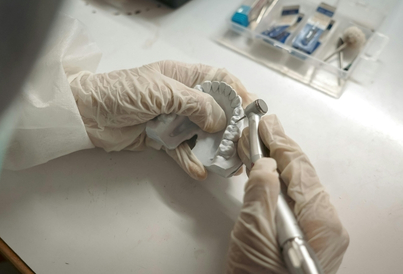How Dental Zirconia Crowns Are Made in the Dental Lab



Zirconia crowns have become a gold standard in restorative dentistry due to their strength, durability, and natural appearance. Crafting these crowns in a dental laboratory is a precise and technologically advanced process that combines artistry with cutting-edge tools. In this blog, we’ll take you behind the scenes to explore how dental zirconia crowns are made in the lab, from initial impressions to the final polished product.
The process begins with the dentist providing the dental lab with an impression of the patient’s tooth. This can be a traditional physical mould or, more commonly today, a digital scan created using intraoral scanners. The impression captures the exact shape, size, and position of the prepared tooth and surrounding teeth to ensure the crown fits perfectly.
Once the impression or digital scan is received, the lab uses Computer-Aided Design (CAD) software to design the zirconia crown. This step is critical for ensuring the crown’s fit, function, and aesthetics.
This digital design phase ensures the crown is tailored to the patient’s unique dental anatomy, balancing functionality with a natural look.
After the design is finalized, the CAD file is sent to a Computer-Aided Manufacturing (CAM) machine, typically a CNC (Computer Numerical Control) milling machine, to create the crown from a zirconia block.
At this stage, the crown is in a “green” (pre-sintered) state, meaning it’s softer and slightly larger than the final product to account for shrinkage during the next step.
Sintering is the process of heating the milled zirconia crown in a specialized oven to achieve its full strength and density. This is a crucial step that transforms the soft, chalky zirconia into a hard, durable restoration.
Once sintered, the zirconia crown is incredibly strong but may require additional finishing to perfect its shape and appearance.
This is especially common for front teeth, where lifelike translucency is key. The crown is fired again at a lower temperature to set the glaze.
Before the crown is sent to the dentist, it undergoes rigorous quality control to ensure it meets the required standards.
Once approved by our experienced technicians at Precision Smiles Dental Lab, the crown is carefully packaged and shipped to the dentist.
The creation of zirconia crowns relies heavily on advanced technology, such as CAD/CAM systems and high-precision milling machines. However, the expertise of dental technicians is equally important. Their skill in designing, adjusting, and finishing the crown ensures it meets both functional and aesthetic expectations. Many labs also use 3D printing for temporary models or to create guides for complex cases, further enhancing precision.
The meticulous process of crafting zirconia crowns results in a restoration that is:
The creation of dental zirconia crowns in the lab is a fascinating blend of technology, science, and craftsmanship. From digital design to precision milling and high temperature sintering, each step is carefully executed to produce a crown that restores both function and beauty to a patient’s smile. By understanding this process, dentists and patients can appreciate the artistry and expertise behind their dental restorations, making zirconia crowns, made by the team at Precision Smiles Dental Lab, a top choice for your restorative treatments.